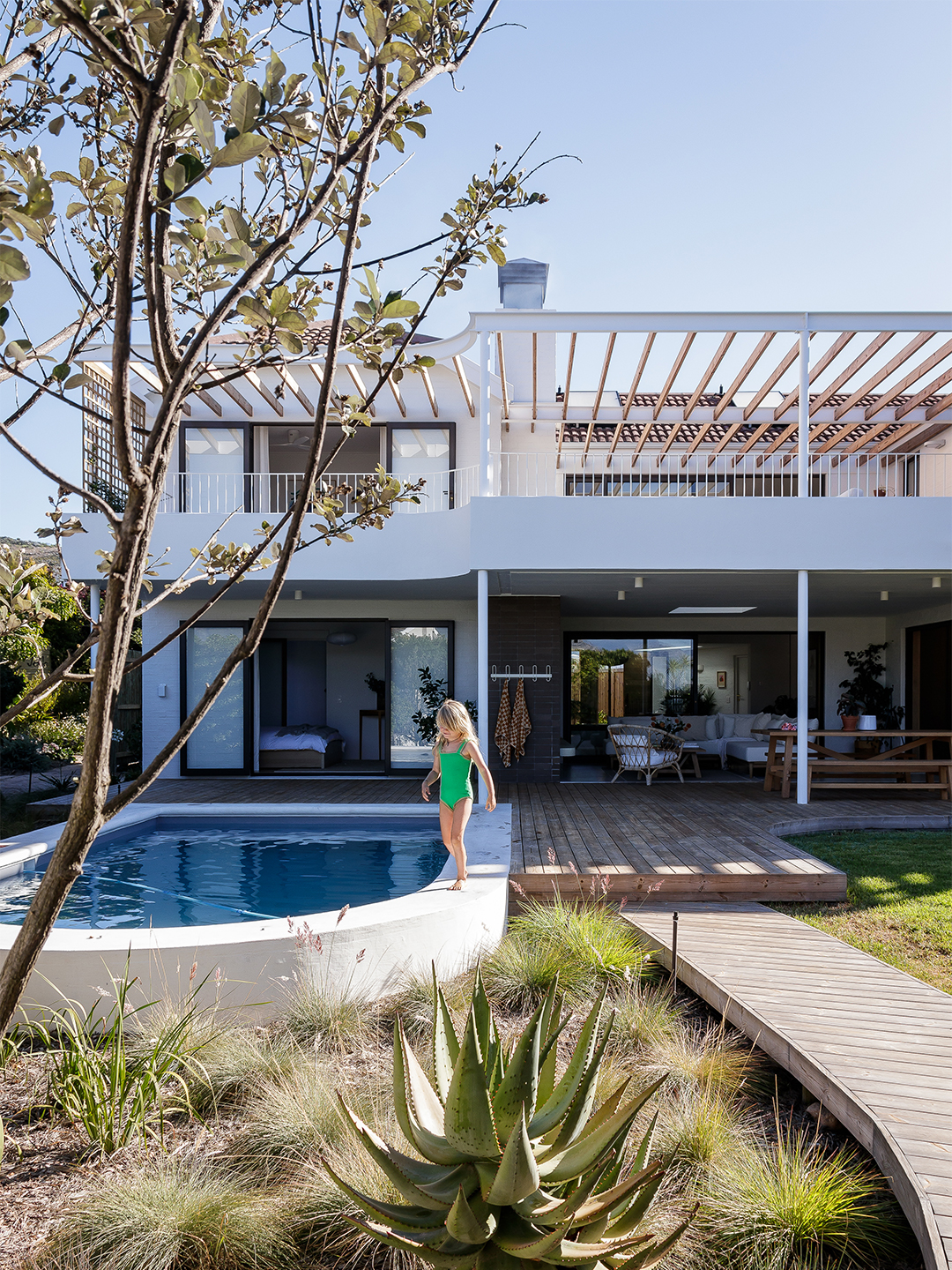We may earn revenue from the products available on this page and participate in affiliate programs.
Interior designer Zarah Riley and her husband, Matt, never thought they would stray far from Cape Town’s city center. Having previously spent two years living in New York, they always considered themselves city people. But when the pandemic hit and they found themselves working from home with two kids, moving to Kommetjie, a beach area around an hour’s drive south, felt like a natural decision. For starters, it allowed Matt to be closer to what he loves most: the ocean. “He wanted quick access to surf, and Kommetjie is the most consistent wave in Cape Town,” says Zarah.
Their house hunt was less dependable. During the search, Zarah kept seeing the same unappealing house pop up on Property24 (a local listing site). It was everything she did not want: a 1990s brick home with no character. “I’m all for a fixer-upper, but this was your classic brick square,” she says. Still, her curiosity got the better of her and she eventually gave in and scheduled a viewing. Once she got a look at the interior, the visit turned out to be entirely worth it. “There was something about the feeling,” she recalls (not to mention the fact that it was only a few steps from the beach). A bonus? “The area feels very community oriented, and it’s a nice environment for the kids,” she points out. “We can have dinner and go for a beach stroll every evening.”

Once the deal was accepted, the family spent a year living in the house to get a feel for the space before making any changes. “It was a grueling first winter; the house leaked from every corner,” says Zarah, who brought on Stretch Architects to assist with the renovation. After a rough few wet and windy months living in a house built for summer, they made the decision to keep the layout, paint the drab brick exterior white, and gut everything else. “We wanted to maximize the light and the connection to the garden by opening everything up,” notes Zarah.

The original house had few windows, so they put in big glass openings on both the sea- and street-facing sides of the house. In the case of the latter, Zarah didn’t want to leave people staring at the neighbors—instead she planted a junglelike garden with bird-of-paradise and king ferns. In the upstairs bathroom, they raised the windowpane so it frames the mountain and added narrow wood shutters for ventilation as well as privacy. “We wanted to make that [outdoor] visual connection, so now you read a lot of green inside the house,” she says. For the guest toilet, she clad the space in floor-to-ceiling forest green ceramic tile. “It’s a place you can have a lot of fun with because it’s not the bathroom you’re in every day. I always think, the smaller the space, the more fun you can have,” she says.


Because the house was still feeling very square (one architect described it as “a soldier standing up”), they introduced loads of curves to the facade (peep the contouring in the balcony, the crescent-shaped swimming pool, and the swooping wood decks). Inside, the oak millwork tacked on another layer of warmth, but knowing wood can be a lot of maintenance for a property by the sea, Zarah used aluminum on the window frames and doorframes, which she clad with wood on the inside.



With limited access to retailers, Zarah looked to local crafts folk to create most of the furniture. “In South Africa, we are very limited, but we have a lot of amazing artisans, so I had a lot of things commissioned,” she says. The oak dining table, which was stained in chocolate brown to create a contrast with the neutral veneer cabinetry in the kitchen, was made by a local brand, AOS. The barstools, which are also stained oak, were produced by Houtlander in Johannesburg, and the shelves were purchased from local design wiz James Mudge. Some items were sourced abroad through traveling friends, such as the Hay pendant light in the living room.

With their new life by the sea, one of the more practical things Zarah had to think about was keeping the beach outside of the home. “How do you get into the house with kids without bringing in sand?” she asked herself. The answer: a “de-sanding path” leading to a private outdoor shower, as well as a side door that directly connects to the guest bathroom. “It was about designing around where we live,” she shares. Still on her to-do list is adding weatherproof blinds around the covered patio so they can use the space 24-7 and fully embrace their new coastal life.
